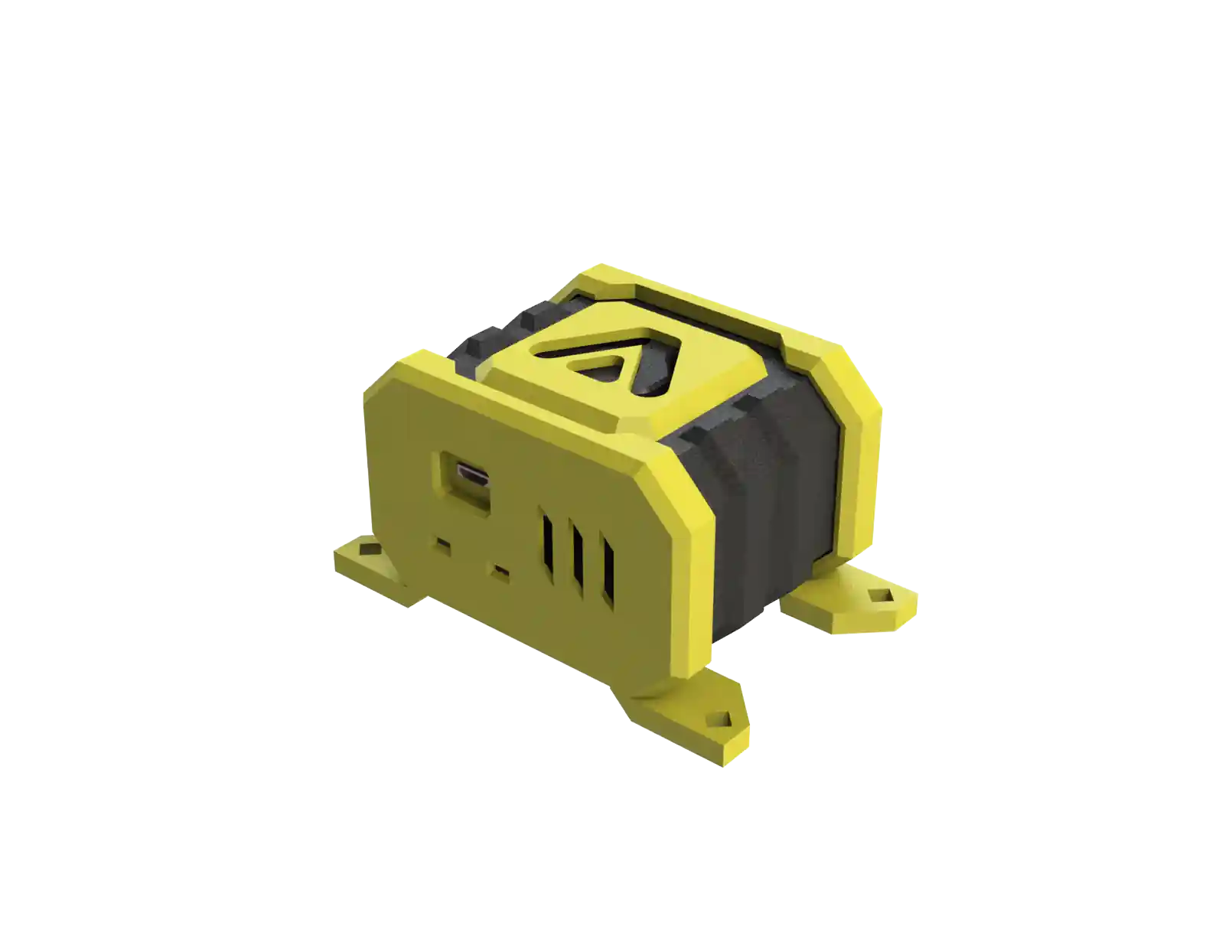Kayros Weather Station

If you aquired an interface with an internal weather station, it will not be necessary to connect an external weather station since the measurements of temperature, humidity and barometric pressure are read in the same enclosure.
In models that do not have an internal weather station, an external weather station can be incorporated.
Kayros external weather station only needs a 5V USB power supply connection. You can connect it to a computer or to an external USB power supply.
Weather data is transmitted by a wireless connection to Accudyno interfaces.
Placement
Internal Weather Station
If you have Accudyno system with a built-in weather sensor, these recommendations apply to the placement of the acquisition interface enclosure, which is where the weather measurement is made.
The weather station must be mounted in a ventilated place inside the same room where the vehicle or engine to be tested is located.
- It should have forced ventilation, and it can be the same fan that cools the engine.
- It should not be near heat sources such as exhaust pipe or exposed to the sun or heaters, as it will cause a high temperature to be measured.
- It should not be mounted in damp corners, as it will affect the humidity measurement.
- Do not mount the weather station over damp walls, as the cold and humidity of the wall will be transferred to the measurement. In the case of mounting on damp walls, use a plastic separator such as PVC or expanded polystyrene (styrofoam) or polyethylene foam.
Manual input of weather data
If you do not have weather station, you can enter the weather data manually in the Accudyno software. Remember to update this data several times a day for greater accuracy of weather correction.
ABSOLUTE PRESSURE
Accudyno system requires the input of absolute atmospheric pressure. Please note that some weather apps indicate relative atmospheric pressure, not absolute. It is recommended to search for an app or website that works with absolute pressure. If you are located at low altitude near sea level, there will be no difference between absolute or relative, but if you are located at high altitude above sea level, absolute pressure tends to decrease with altitude, while relative pressure offsets that altitude and is calculated as if it was at sea level. This means that, for example, at 500m above sea level, the standard absolute pressure will be about 950 hPa, while the relative pressure will be 1013 hPa (the same as at sea level), which is incorrect for calculating the weather correction factor.